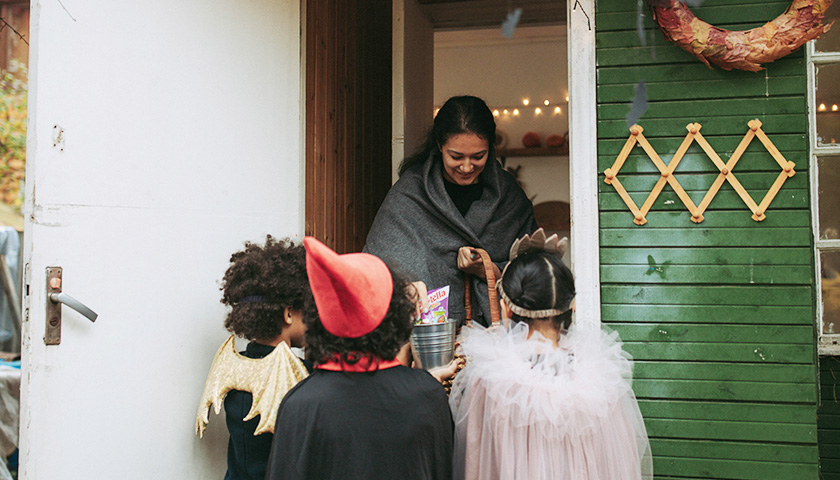by James Peron
Tonight American kids will observe a tradition not widely celebrated in the rest of the world: Halloween. They will dress up as ghosts, witches, goblins, politicians, and other scary things, then go door to door greeting neighbors with Trick or treat! Residents will drop candy in the bags the children are carrying.
Regardless of anyone’s intention, the tradition nicely demonstrates the creativity of free exchange.
Since there is no central planning of Halloween, the goodies people distribute will vary widely. Some houses will distribute several different items and change them throughout the night. Others will stick to the same thing. A child might get a candy bar, a lollypop, gum, or many other possibilities.
The kids know that some houses will give them treats they absolutely love. Others will give them things that don’t particularly care for. So what will they do?
They will trade.
When I was young my brothers and I would come home and empty our bags — and the trading would begin. I’d always have something I didn’t like, and one of my brothers would inevitably have something I did like. If he preferred what I had over what he had, we’d trade.
Some exchanges were a bit more complex: I’ll give you two of these and one of this for that. Or I would have to give something to one brother in order to get from him something I could trade to another brother for something he had that I wanted. Kids can get pretty sophisticated when it comes to trading things.
In particularly hard negotiations one brother might demand that I make his bed for him in exchange for what I wanted. This could get very serious.
Some kids learned quickly that waiting until you got home to make exchanges with your siblings limited your options. Watch tonight and you’ll see what I mean. Groups of kids will periodically stop somewhere under a street light and begin the bartering there.
By this method, instead of having a small number of trading partners, they can trade with the kids from the entire neighborhood. More trading possibilities mean you are more likely to get what you want. I craved Snickers bars and absolutely hated anything with peanut butter. My brother loved peanut butter. So he gave me his Snickers and I gave him my Reece’s Peanut Butter Cups. He was happy. I was happy.
Parents Didn’t Interfere
Luckily our parents didn’t interfere too often to make sure the trading was fair. It was fair as far as we were concerned. Imagine some know-it-all parent pointing out that since candy X costs more than candy Y, to trade them straight up is unfair. Imagine the parent imposing not free trade but fair trade. There would have been a lot of unhappy children on Halloween who were stuck with candy they didn’t want and unable to exchange it.
I wouldn’t have understood if someone told me Peanut Butter Cups were more valuable than Snickers. To whom? What I knew was that I valued one and not the other, regardless of what a third party might say.
We kids figured out that our resources, the treats, were not evenly distributed. We each ended up with different mixtures of goodies. The kids with the best stuff often were the ones who worked harder at this Trick-or-Treat business. They knocked on more doors, spent more time out, or had advance warning about who had really good treats. So they often earned their advantage.
Others were just plain lucky. They randomly got more good things than the rest of us. Well, good was subjective, and that was why we traded. In the end the exchanges led to greater levels of satisfaction — and perhaps a few more bellyaches.
Halloween is really just international trade on a local kid level.
– – –
Jim Peron is the author of Exploding Population Myths (Heartland Institute). He is executive director of the Institute for Liberal Values in Johannesburg, South Africa.
Photo “Trick-or-Treaters on Halloween” by Yaroslav Shuraev.





